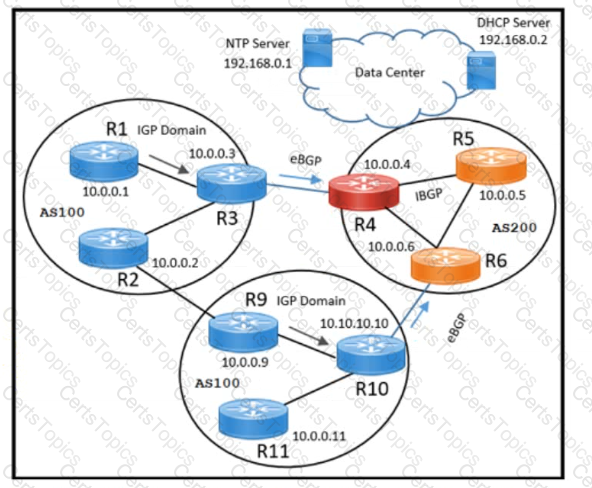An engineer is designing a network for a customer running a wireless network with a common VLAN for all APs. The customer is experiencing unicast flooding in the Layer 2 network between the aggregation and access layers. The customer wants to reduce the flooding and improve convergence time. Which solution meets these requirements?
An enterprise customer has these requirements:
end-to-end QoS for the business-critical applications and VoIP services based on CoS marking.
flexibility to offer services such as IPv6 and multicast without any reliance on the service provider.
support for full-mesh connectivity at Layer 2.
Which WAN connectivity option meets these requirements?

Refer to the exhibit. A network engineer working for a private service provider with an employee ID: 4670:71:451 must design a BGP solution based on:
All traffic originating from AS100 must pass through AS200 to reach the NTP and DHCP server
When a link failure occurs between R3 and R4, traffic must follow the R2-R9 link to reach the NTP and DHCP server.
Which solution must the design include?
How do endpoints inside an SD-Access network reach resources outside the fabric?